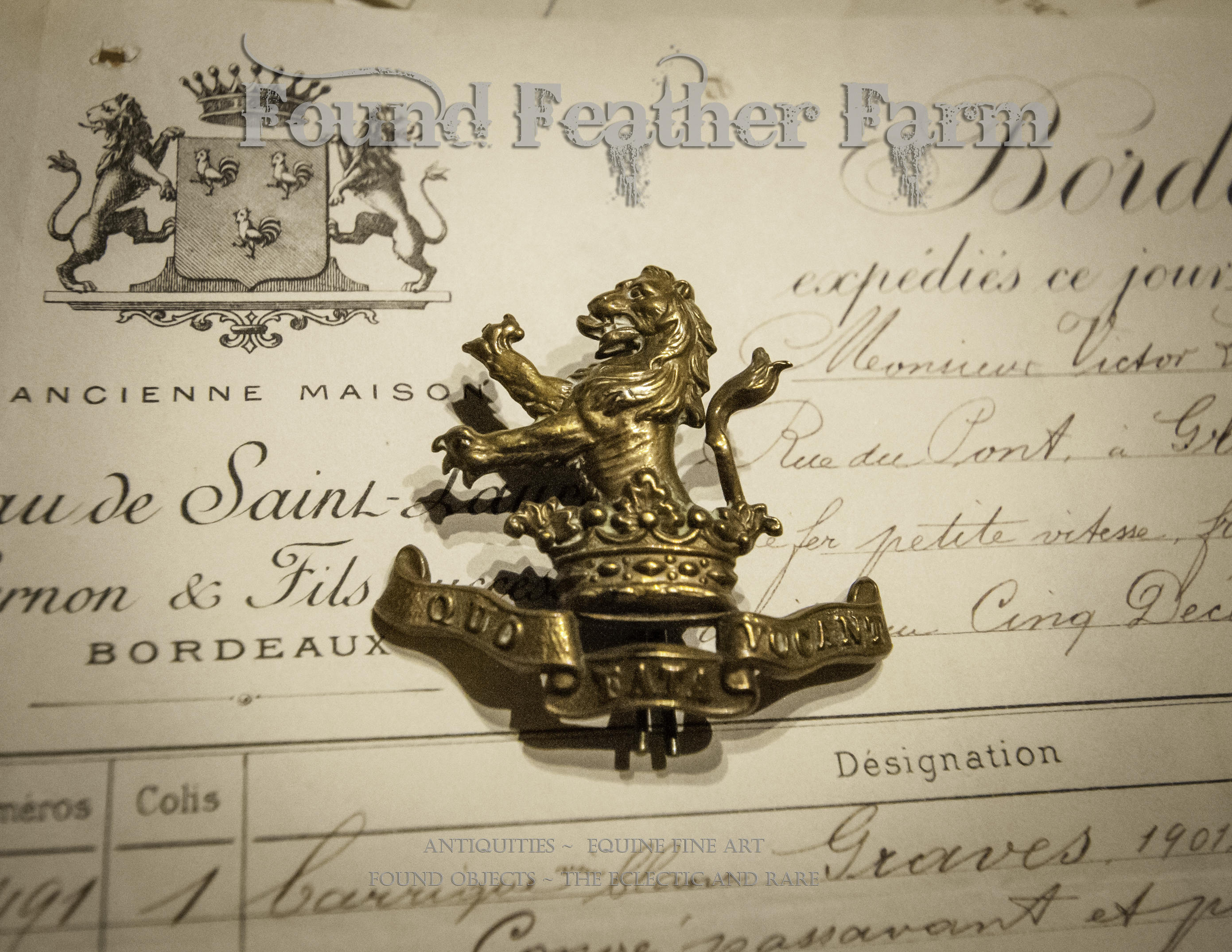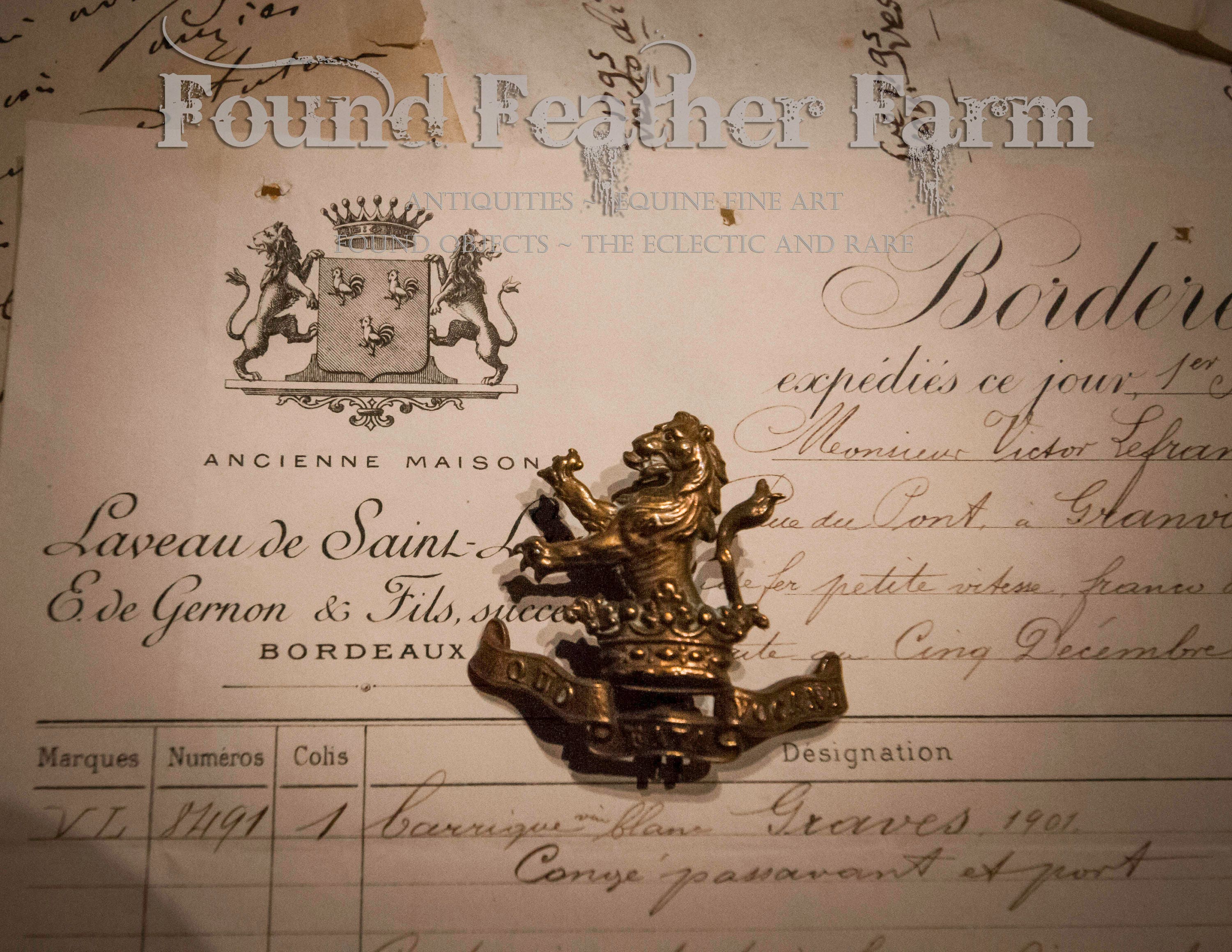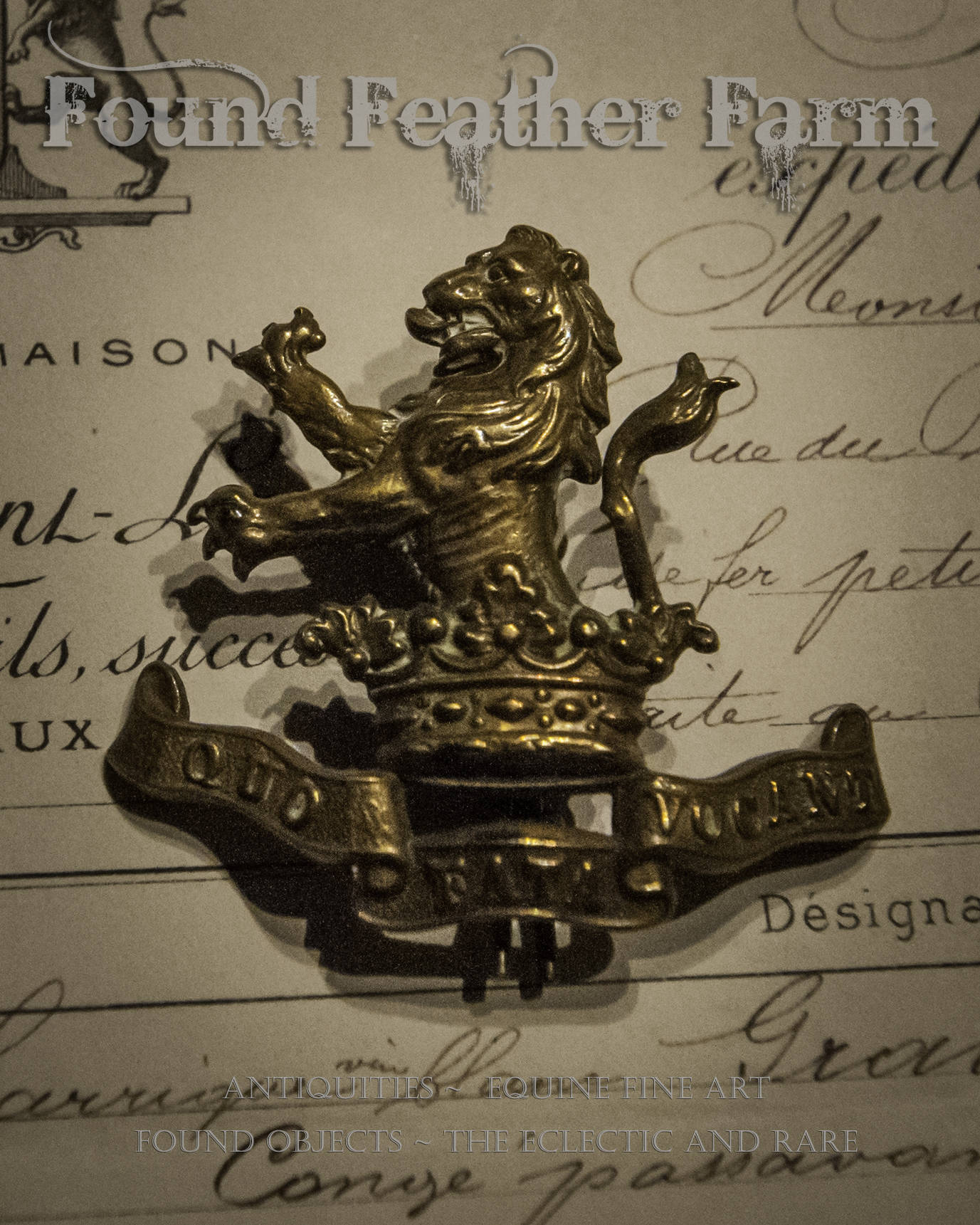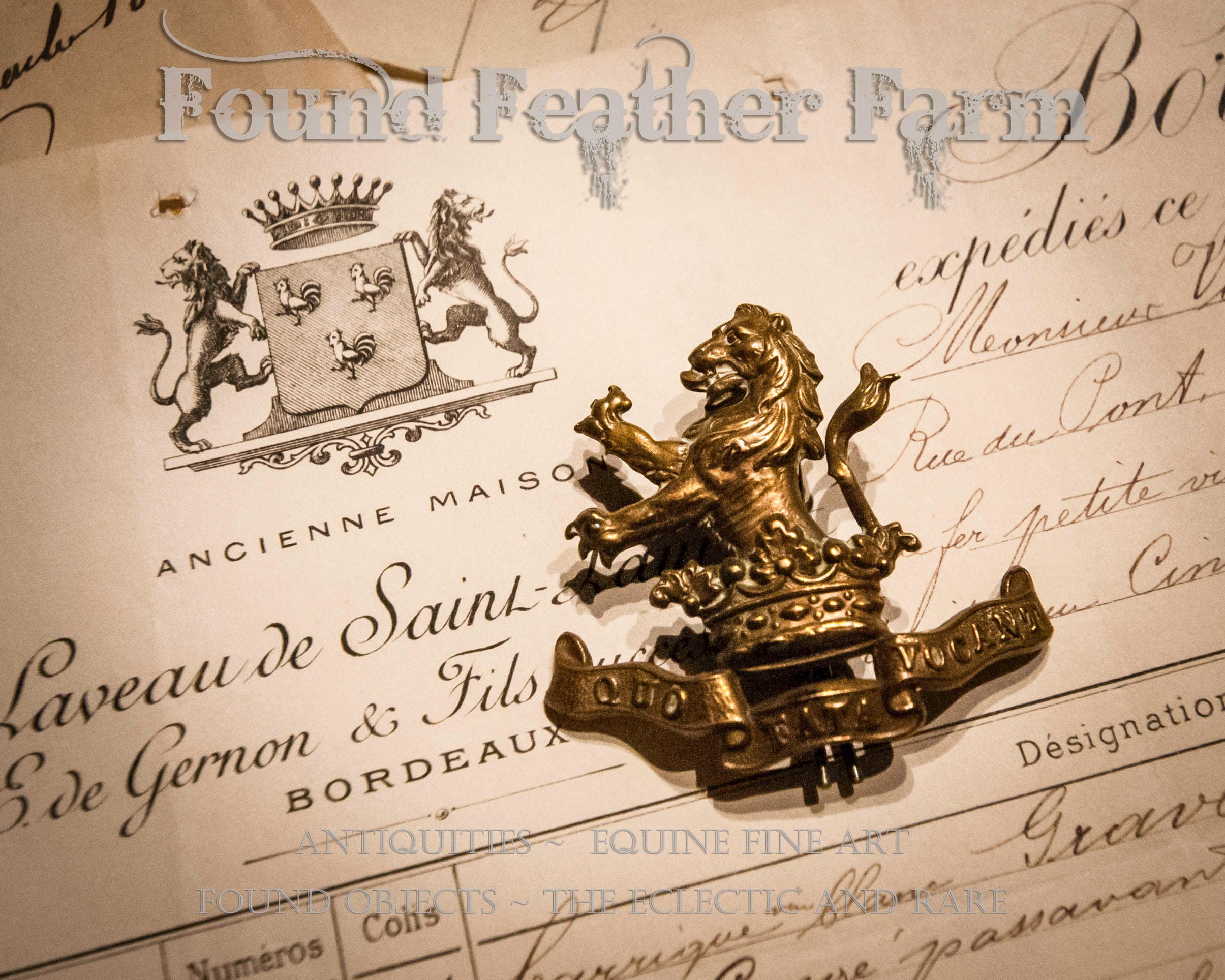French Antique Brass Lion, Crown and Banner Pin with an Antique French 1906 Document
An incredible British cap badge brass pin from the 7th (The Princess Royal’s) Dragoon Guards.
The motto of the guards was ‘Quo Fata Vocant’ (meaning ‘Wherever Fate Calls’) which is stamped on the ribbon banner at the base of the pin. The regal crown sits at the center of the
pin. The guards were named in honor of King George III's eldest daughter, the Princess Royal in 1788.
This badge pin is a very old antique and could be dated anywhere from 1788 to the very early 1900's. The exact circa date is difficult to determine. This brief history of the Guards may help to shed some light on it's age.
A rare find!
This piece is being sold with the antique French bill of sale ephemera from 1906 that has a similar crest emblem stamped on it.
Size: Height 1.75" x Width 1.85" x Depth .40"
Weight: 4 ounces
Paper Ephemera: Height 7" x Width 8.75" x Depth .01"
Weight: 1 gram
In November 1688 William of Orange landed in Devon to oust his father-in-law, King James II, from the British throne, later succeeding as King William III. When news of this reached London, James’s daughter Anne fled to Nottingham escorted by horsemen under William Cavendish, later 1st Duke of Devonshire. The following month William III merged this and a number of other troops of cavalry to form a single regiment, again commanded by Cavendish.
This was given the ranking of 9th Horse in 1690 and 8th Horse four years later. By then it had already served against James and his French allies in Ireland and the Low Countries, two areas to which it would repeatedly return during the next two centuries.
Sir John Ligonier was an experienced army commander whose French Protestant family had moved to England when he was a teenager. In 1720 he became the 8th Horse’s fifth colonel, retaining the role for 29 years and giving it his crest of a lion and crown. The unit spent most of his colonelcy in Ireland and even joined the Irish establishment as the 4th Horse in 1746. This followed the unit’s return to Ireland after taking part in the German campaign of 1742 to 1745, which included the battle of Dettingen. Now in the regimental museum, a standard carried by the regiment at that battle is now the oldest surviving British cavalry standard in the world.
Another three years in Germany followed in 1760 during the Seven Years War, but it then remained in Great Britain for 80 years, with no overseas service throughout the French Revolutionary and Napoleonic Wars. This period did, however, see it converted into a dragoon guard regiment in 1788, when it was also named in honour of George III’s eldest daughter, the Princess Royal.
The regiment’s first deployment beyond Europe came in 1843 to South Africa, where it stayed for five years and fought in the Kaffir War. It fought in Bengal during the Indian Mutiny in 1857, remaining there for ten years on garrison. This was followed by 16 years on home service, only interrupted by participation in the 1882 Egyptian campaign. This culminated in the battle of Tel El Kebir, where the regiment did not suffer a single casualty. The unit also fought in the Boer War and spent a total of 14 more years in India between 1883 and 1914.
The unit spent the whole First World War on the Western Front, hardly ever fighting as cavalry. One exception occurred ten minutes before the Armistice came into force in 1918, when a squadron from the unit galloped ten miles to capture the town of Lessines, in what was the final cavalry action of the conflict. The regiment’s only post-war deployment was to Iraq before, in 1922, it was amalgamated with the 4th Royal Irish Dragoon Guards to form the 4th/7th Dragoon Guards.
Returns & Exchanges
I don't accept returns, exchanges, or cancellations
But please contact me if you have any problems with your order.
Privacy
Why I Need Your Information and How I Use It
I rely on a number of legal bases to collect, use, and share your information, including:
as needed to provide my services, such as when I use your information to fulfill your order, to settle disputes, or to provide customer support;
when you have provided your affirmative consent, which you may revoke at any time, such as by signing up for my mailing list;
if necessary to comply with a legal obligation or court order or in connection with a legal claim, such as retaining information about your purchases if required by tax law; and
as necessary for the purpose of my legitimate interests, if those legitimate interests are not overridden by your rights or interests, such as 1) providing and improving my services. I use your information to provide the services you requested and in my legitimate interest to improve my services; and 2) Compliance with the Etsy Seller Policy and Terms of Use. I use your information as necessary to comply with my obligations under the Etsy Seller Policy and Terms of Use.





